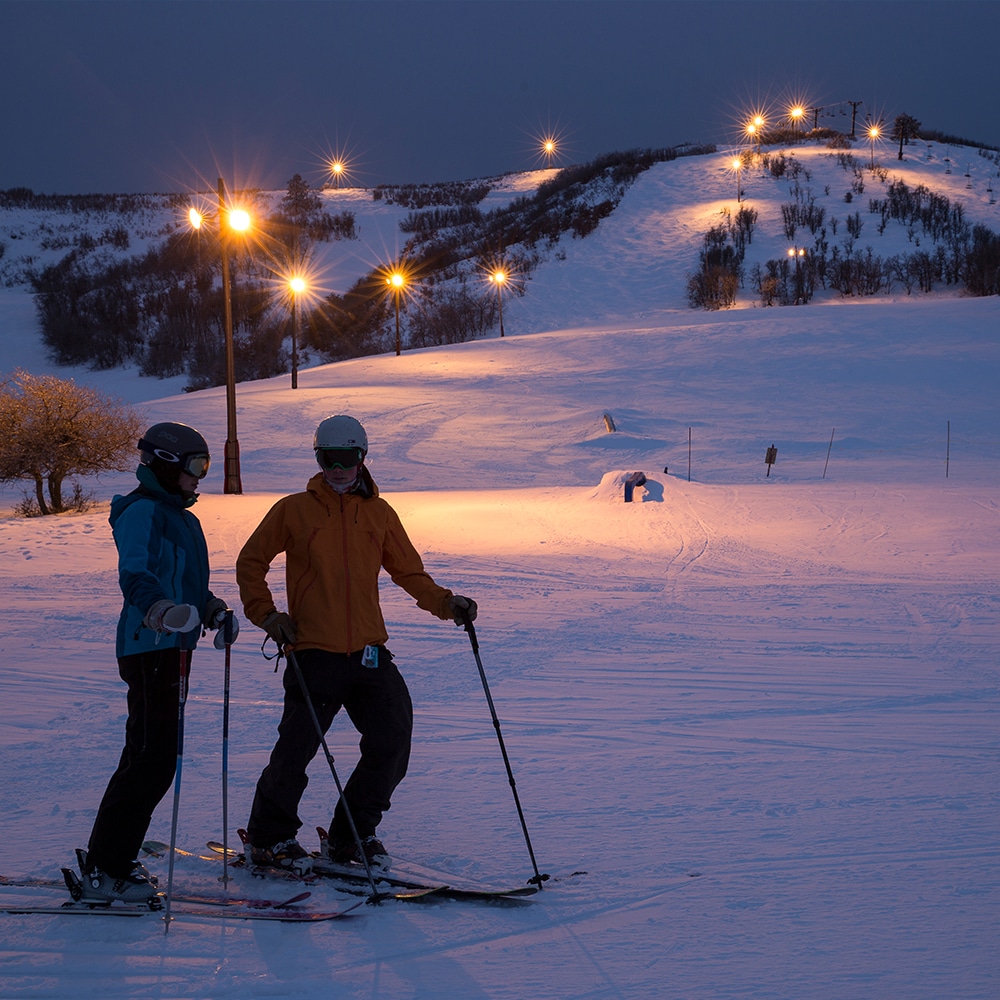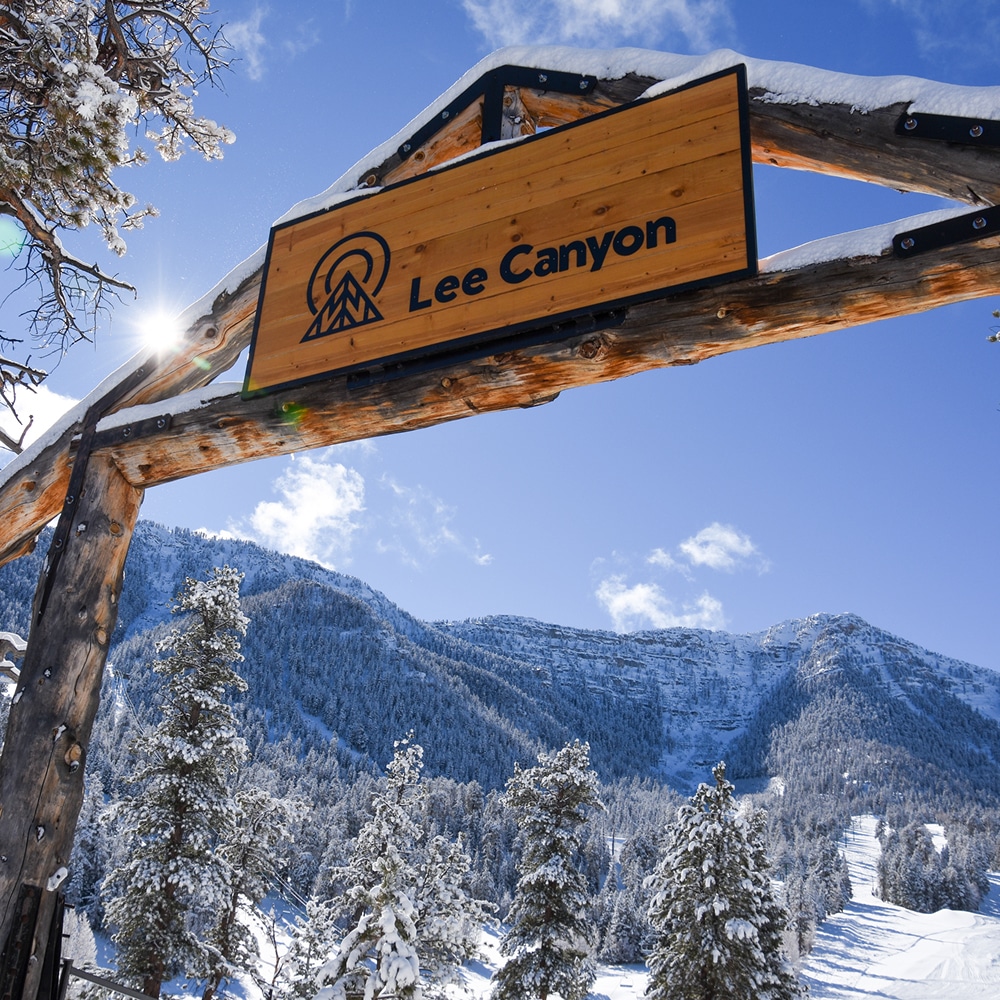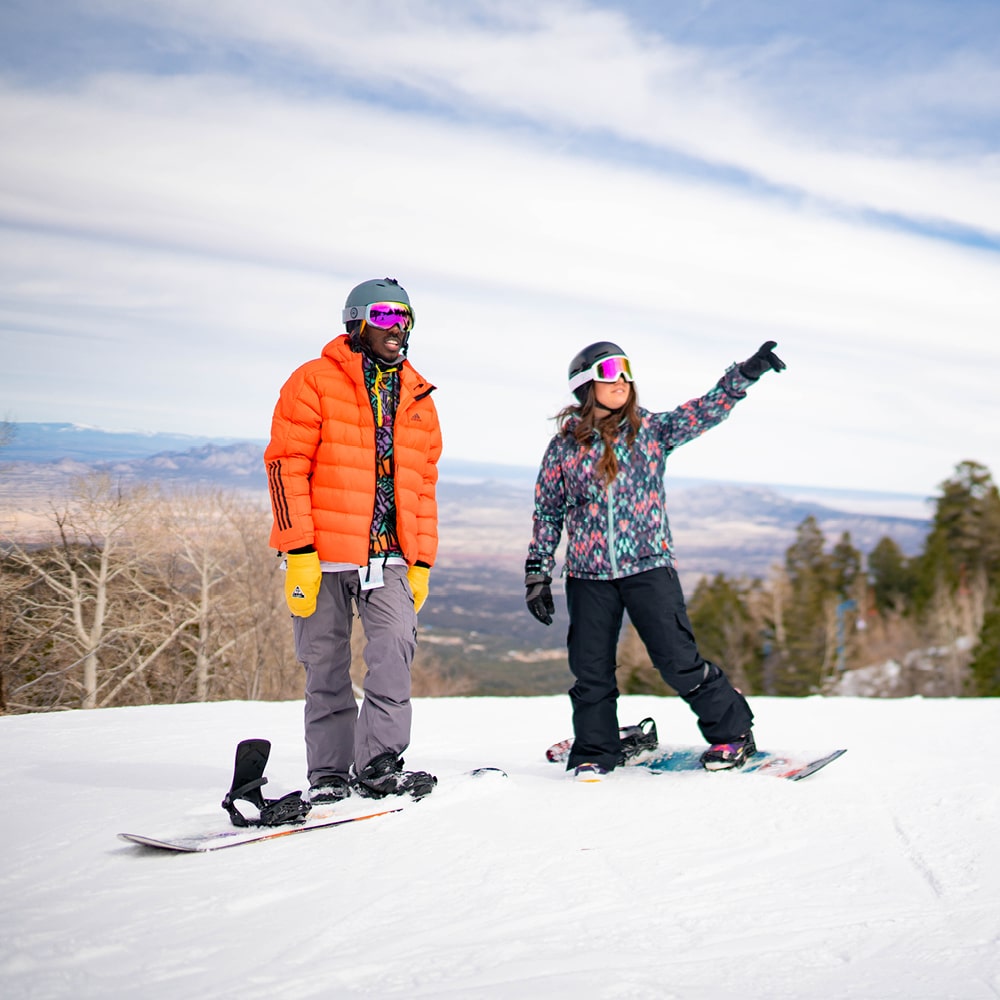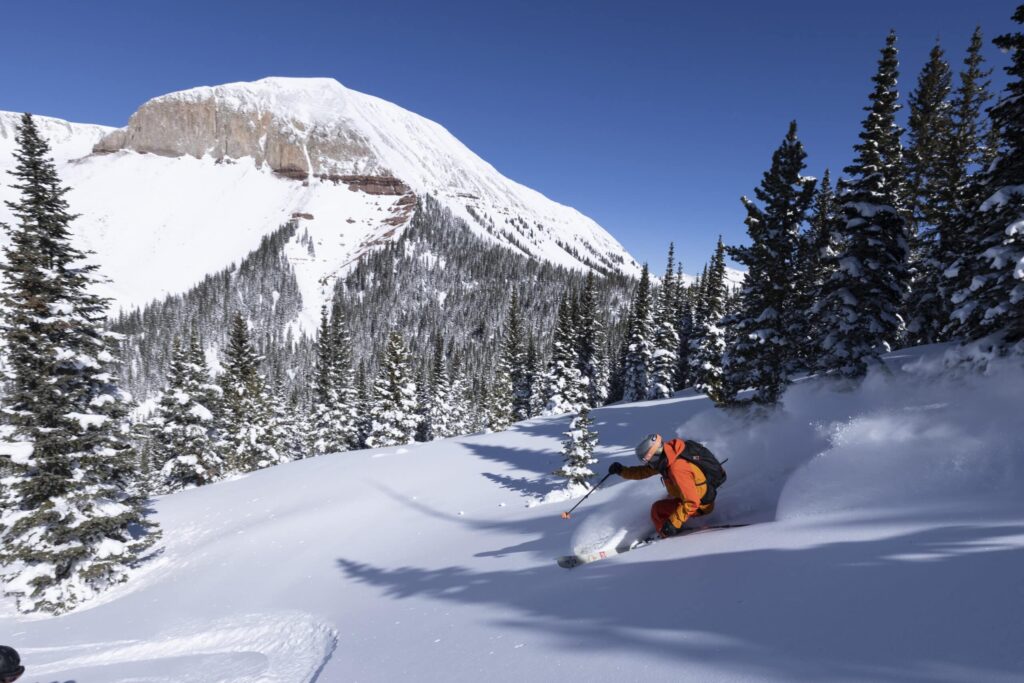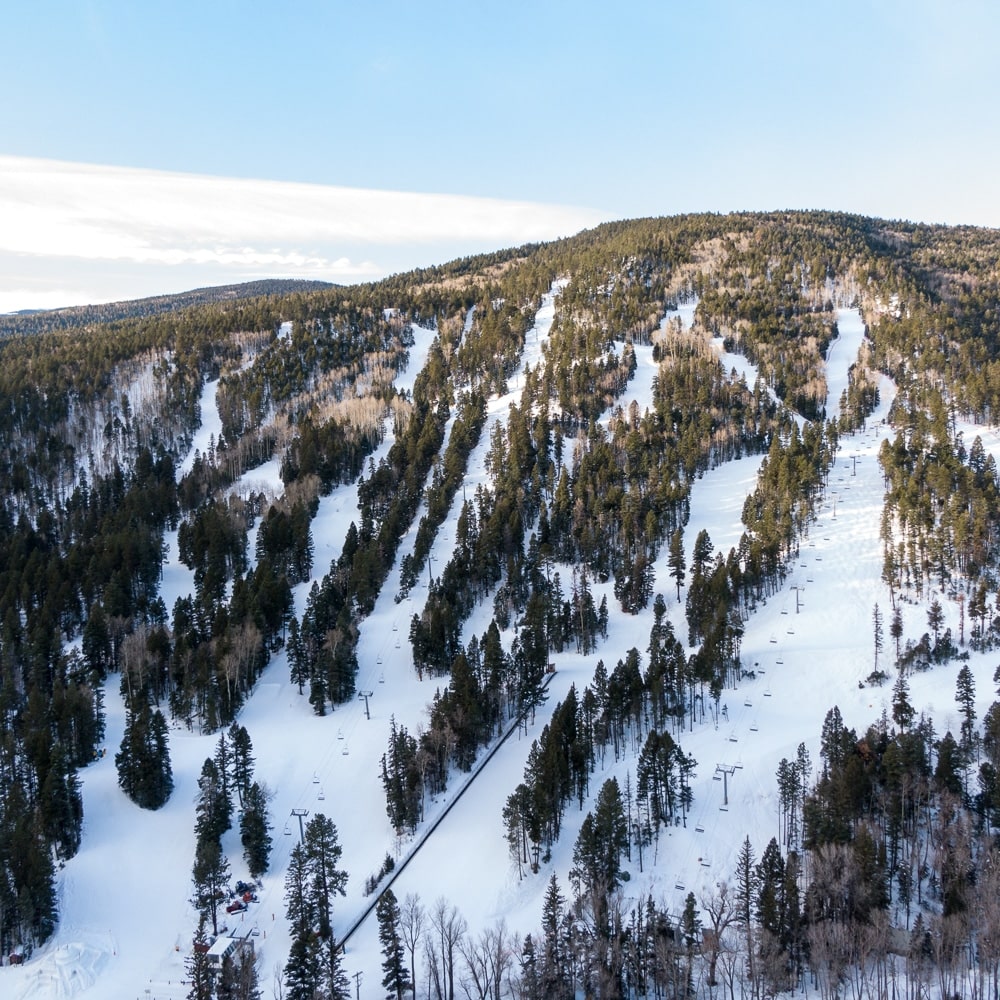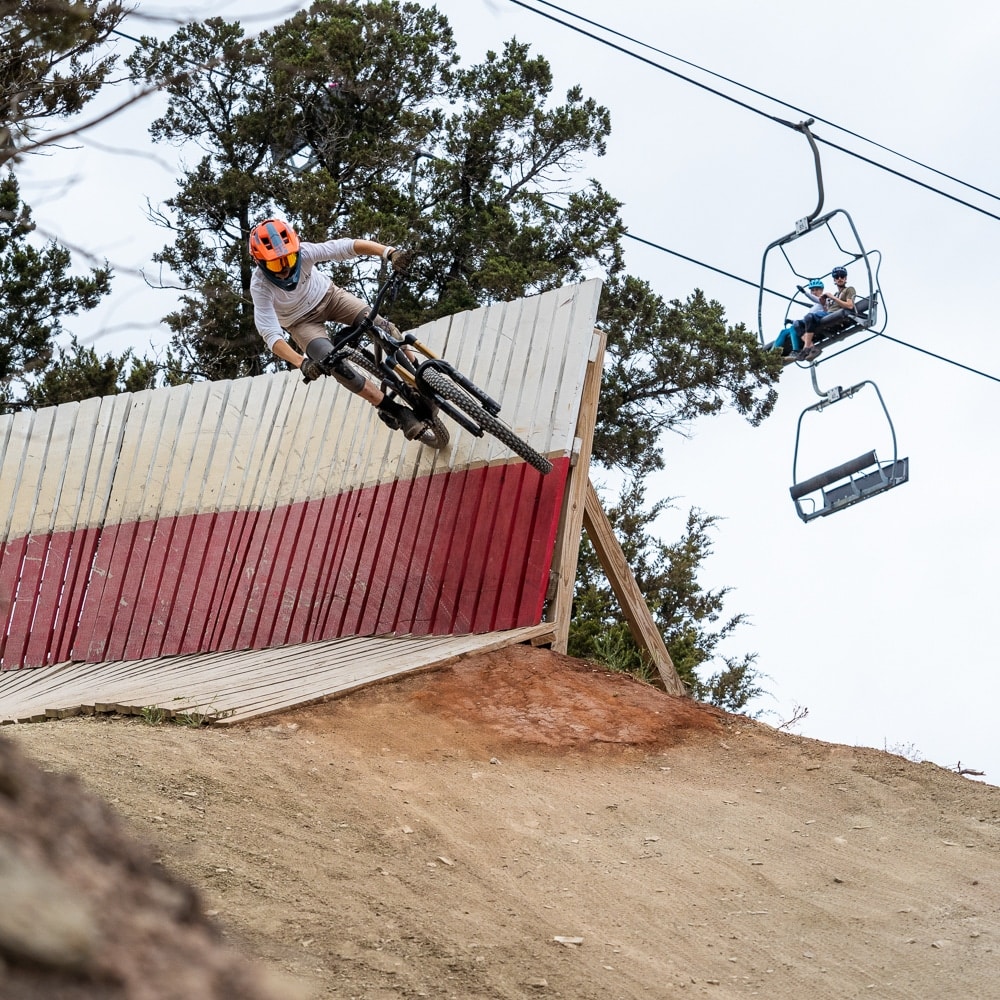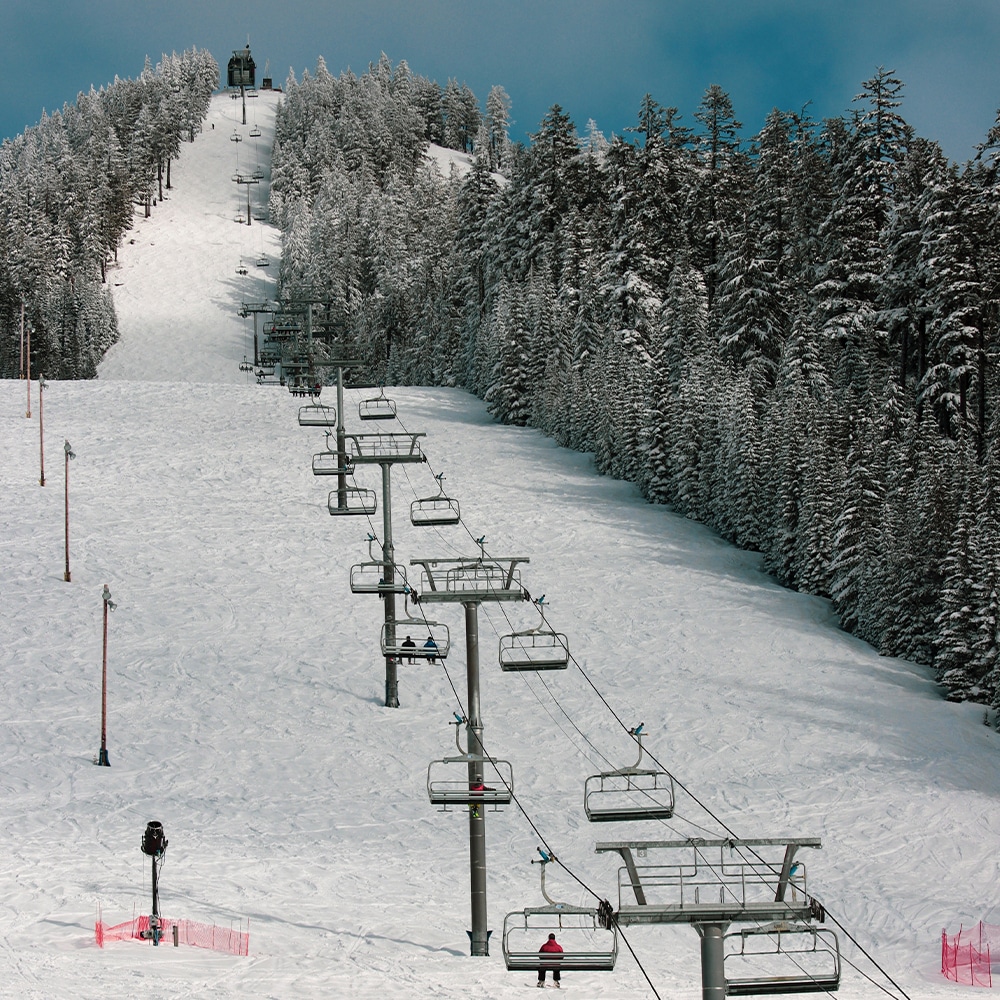Mountain safety
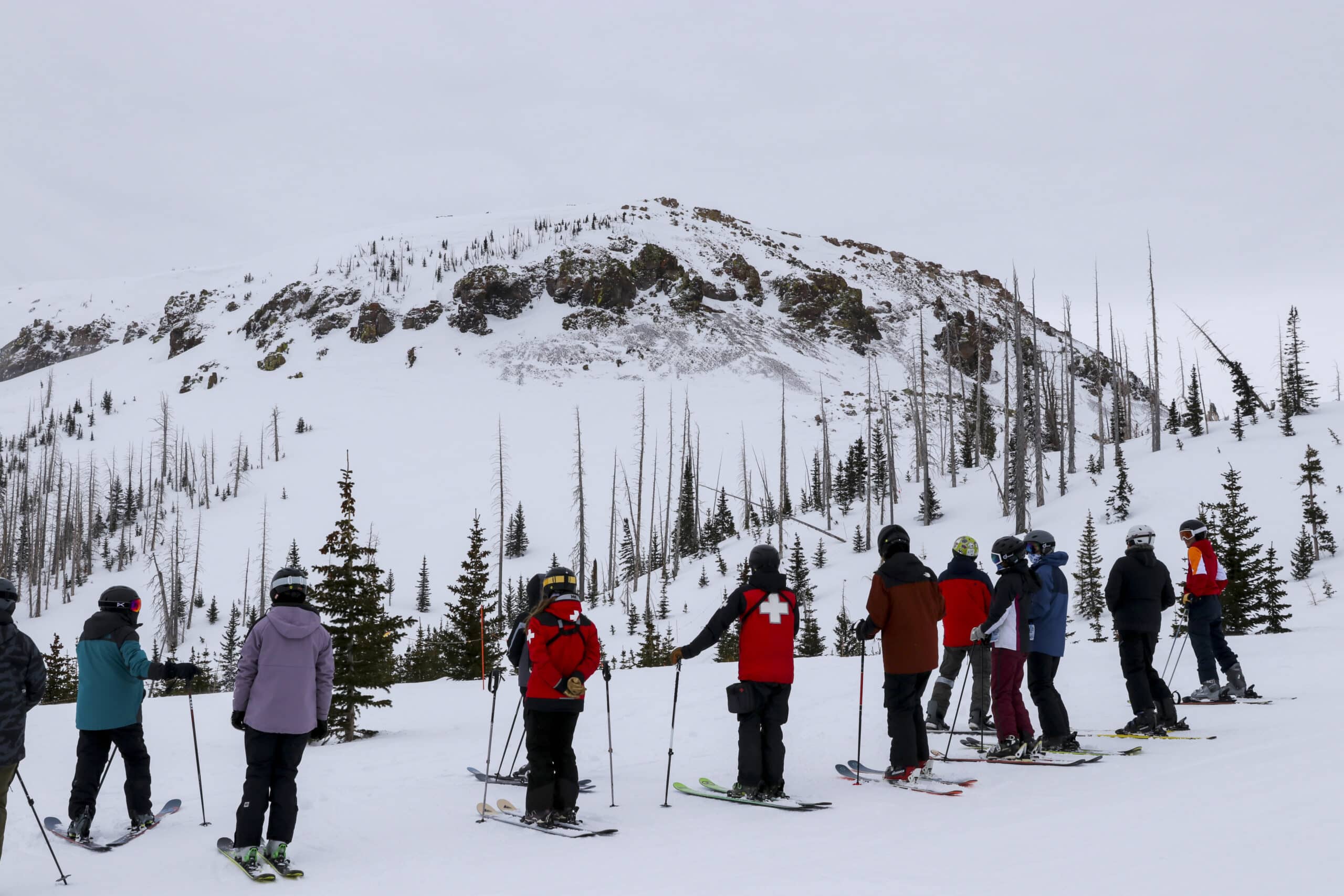
Responsibility Code
- Always stay in control. You must be able to stop or avoid people or objects.
- People ahead or downhill of you have the right-of-way. You must avoid them.
- Stop only where you are visible from above and do not restrict traffic.
- Look uphill and avoid others before starting downhill or entering a trail.
- You must prevent runaway equipment.
- Read and obey all signs, warnings, and hazard markings.
- Keep off closed trails and out of closed areas.
- You must know how and be able to load, ride and unload lifts safely. If you need assistance, ask the lift attendant.
- Do not use lifts or terrain when impaired by alcohol or drugs.
- If you are involved in a collision or incident, share your contact information with each other and a ski area employee.
Winter sports involve risk of serious injury or death. Your knowledge, decisions and actions contribute to your safety and that of others.
Inherent Risk of Skiing
Under Utah law, any individual who engages in the sport of skiing/riding, alpine or nordic, or any person who is within the boundaries of a ski area for the purpose of observing any skiing activity, accepts and assumes the inherent risk of skiing insofar as they are reasonably obvious, expected or necessary.
Unmarked Obstacles
Be advised that all poles and/or flags, fencing, signage and padding on equipment or objects or other forms of marking devices are used by the ski area to inform you of the presence or location of a potential obstacle or hazard. These markers are no guarantee of your safety and will not protect you from injury. It is part of your responsibility under Your Responsibility Code to avoid all obstacles or hazards, including those that are so marked.Snowcats, snowmobiles, snowmaking equipment may be encountered at any time.
Mountain Code of Conduct
Brian Head Resort reserves the right to terminate skiing and riding privileges on a first offense of the Code of Conduct if it determines, in its sole discretion, that such action is appropriate. Especially egregious behavior could result in an individual being banned from the Resort indefinitely. It is the individual’s responsibility to understand and adhere to all rules, laws or regulations of the Resort, Town, county, and state.
The following will not be tolerated at Brian Head Resort:
- Fast and/or reckless skiing and riding.
- Removing, damaging, and/or defacing any sign, boundary line, trail indicator, or other Resort infrastructure.
- Refusal to present and/or relinquish your pass to a mountain employee when requested.
- Violent behavior or abusive, foul, or threatening language.
- Skiing/riding in a closed area. It is your responsibility to know what trails are open and closed.
- Going over or under a rope or past another trail closure indicator.
- Riding a lift or skiing/riding while under the influence of alcohol or drugs.
- Actions or behaviors that in the Resort’s sole judgment may endanger your safety or the safety of others.
- Violating the law, including the Skiers Responsibility Code.
Terrain Park Safety
For more information about Park SMART use the link provided. https://discoversnow.org/discoversnow/Safety/Terrain_Park_Safety/DS/Safety/Terrain_Park_Safety.aspx?hkey=c8686b73-312c-4467-be23-34c2280b8dcf
START SMALL – Work your way up. Build your skills.
MAKE A PLAN – Every feature. Every time.
ALWAYS LOOK – Before you drop.
RESPECT – The features and other users.TAKE IT EASY – Know your limits. Land on your feet.
Deep Snow Immersion and Tree Wells
Caution! Tree wells and deep snow can increase risk of immersion, injuries, and fatalities. Prevent deep snow immersion by always skiing with a buddy and keeping your buddy in sight. In addition, give tree wells space and carry proper rescue equipment, including transceiver, probe, shovel, whistle, and cell phone to call for rescue. Skiers should consider skiing without pole straps. In the case that someone is immersed in deep snow or a tree well, try to clear out snow to uncover their airway- do not leave the individual. For more information about deep snow immersion go to https://www.deepsnowsafety.org/.
Chair Jumping/Chairlift Safety
- Be familiar with the type of lift you are riding, and ask for help if you need it.
- Before loading, remove backpacks and secure loose items. Remove pole straps from wrists.
- Look over your shoulder to watch the chair approach.
- Sit all the way in the chair, with your back to the seat rest.
- If the lift has a restraint bar, wait until everyone is seated, and slowly reach up and lower the bar. Do not attempt to lower the bar if you cannot reach it! Adults should always help kids to lower the bar.
- Be aware of your surroundings while riding the lift. If you drop something, let it fall! You can always ask Ski Patrol for help retrieving the lost item.
- As you approach the top terminal, prepare to raise the bar. Look for signs advising you to do so to help with your timing.
Chair jumping is strictly prohibited. Jumping out of a chair lift has the specific potential of creating hazardous conditions for all riders on that lift.
Collision Safety
You must be in control and avoid the person downhill of your path. A skier/snowboarder involved in a collision with another skier/snowboarder that results in an injury shall not leave the vicinity of the collision before giving the skier’s/snowboarder’s name and current address and telephone number to an employee of Brian Head Resort. This does not prohibit a skier/snowboarder from leaving the scene of a collision to secure first aid for a person who is injured in the collision. If a skier/snowboarder leaves the scene of a collision to secure first aid, the skier/snowboarder shall leave their name, current address, and telephone number as required after securing the first aid.
Complementing the Responsibility Code and it’s 7 tenets, #RideAnotherDay promotes 3 actions every skier and rider can take to help keep themselves and those around safer on the slopes.
1. Be Ready
Be ready to slow down or avoid objects or other people at any time. Ski and ride in such a way that you are always able to control yourself regardless of conditions and avoid others and objects you may encounter on the run, groomed or otherwise.
2. Stay Alert
Stay alert to what’s going on around you, especially other skiers and riders. Being aware of those around and changing conditions will help you have a fun and safe day on the hill.
3. Plan Ahead
Ease up at blind spots, check uphill when merging onto trails, and give other skiers plenty of room when passing. Look out for spots on the run where traffic merges or you can’t see what’s coming next. If you are unfamiliar with a run, take it easy the first time down it and make note of places where you’ll want to slow down, such as cat tracks and rollers. Also, give other skiers and riders lots or room, especially if you are passing them. There’s plenty of space out there, so there’s no need to crowd each other.
By doing these three things every run, you’ll be helping keep the slopes enjoyable, for you and everyone else.
Weather & High Altitude
Brian Head Resort sits at 9,600 feet above sea level right on the edge of the Colorado Plateau with quick changing weather patterns. People coming from lower elevations may experience altitude sickness. Signs and symptoms of altitude sickness may include headaches, fatigue, nausea, insomnia, and loss of appetite. If altitude sickness presents, the best way to treat altitude sickness is to go down in elevation, if possible. Be aware that high elevation can also accentuate existing health problems. If you have a respiratory or vascular illness, consult your physician before your trip. Seek medical assistance if problems persist or get worse. The following are considerations for the quick changing weather conditions and winter environment that can be present at Brian Head Resort.
- Ultra-Violet rays are more severe at higher elevations. Protect your skin from the effects of the sun and keep in mind that the snow reflects the sun’s rays. Wear sunscreen rated at least 30 SPF or higher.
- Wear eye protection such as sunglasses or goggles. These should filter both UVA and UVB rays and be rated at 90%. Eyes can sunburn just like your skin.
- Be prepared for quickly changing weather conditions. Dress in layers with your outer layer of clothing being of a water repellent fabric.
Avalanches
Avalanches may occur both inside and outside of the developed ski area at any time. Avalanches are an inherent risk of the sport due to the nature of snow and its accumulation on steep, mountainous terrain.
Backcountry Warning
The ski area assumes no responsibility for individuals who elect to go into the backcountry terrain beyond the ski area boundary. To access the backcountry, use designated exit points only. Areas beyond the ski area boundary are not patrolled or maintained. Avalanches, unmarked obstacles and other natural hazards exist. The backcountry avalanche hazard may be extreme. Rescue in the backcountry, if available, will be costly and may take time.
Drones
Unless authorized by management for special events or otherwise, Brian Head Resort does not allow drones within the boundaries of the ski resort during normal operating hours.
Slow Zones
Brian Head Resort has certain areas designated as slow zones, indicated by yellow shading and on the trail maps. Please observe the posted slow areas by maintaining a speed no faster than the general flow of traffic. Fast and aggressive skiing will not be tolerated and may result in termination of skiing/riding privileges.
Children in Backpacks
Brian Head Resort does not permit the use of backpacks to carry children. Children riding lifts at Brian Head Resort must be able to load, ride, and unload the lift without being carried.
Slippery Surfaces
Use caution walking especially in buildings, on walkways and in parking lots. Melting and freezing as well as water and snow accumulation, can cause surfaces to become slippery any time of the day or night. Try to clean the snow off the bottom of plastic ski boots to help prevent a slip and fall. Use footwear with good tread and/or use commercially available products made for the bottom of shoes and boots to give better traction.
Permitted Gear
NO SLEDDING ALLOWED!
SKIS: Allowed with a working brake binding system or a retention device
SNOWBOARDS: Allowed with a retention device (Snowboard binding considered acceptable)
TELEMARK SKIS: Allowed with a retention device or a working brake system. (Please be aware of releasable telemark bindings as they typically do not have a retention device)
MONOSKIS: Allowed with a working brake system or retention device
SKI BIKES:
Brian Head Resort accommodates skiers and snowboarders using traditional equipment that must include bindings and ski retention devices. Brian Head Resort also accommodates ski bike operators. Ski bikes are a hybrid approach for downhill skiing.
- Ski Bikes must be commercially manufactured or a commercially manufactured conversion kit for a mountain bike.
- Ski Bikes must be equipped with an appropriate retention device to prevent runaway equipment.
- Ski bikes must not impede the natural flow of lift operations.
- Users must be able to know how to load and unload the lift safely.
SNOWSKATES: Allowed with a retention device and metal edges & must be commercially manufactured
SNOWBLADES: Allowed with a retention device and metal edges & must be commercially manufactured
SNOWDECKS: Allowed with a retention device and metal edges & must be commercially manufactured
Devices without appropriate binding systems, restraining devices, and foot passengers are not allowed on lifts or terrain. Below are a few examples of what Brian Head Resorts does NOT allow for alternative sliding devices at our resorts which includes but not limited to the following devices:
SNOWSHOES: NOT Allowed
PLASTIC SNOWBOARDS: NOT Allowed (plastic snowboards that do not have metal edges)
SLEDS/DISCS: NOT Allowed
SNOWSCOOTERS: NOT Allowed
TOBOGGANS/TUBES: NOT Allowed
GHOSKY: NOT Allowed
AIRBOARD: NOT Allowed
BODYSLED: NOT Allowed
SNOWMOBILES: NOT Allowed (snowmobiles can only be used on resort property by Authorized Personnel)
SNOWBIKES (bicycle conversion): NOT Allowed (bikes are not allowed to have gears/chain/wheels/tires or crank assembly)Exceptions are made only for disabled skiers using acceptable adaptive equipment that includes a binding and retention device. If disabled skier cannot load, ride, or unload the lift by themselves safely, then they must be accompanied by their personal assistant.Click here for visual policy and more details. This list is subject to change at any time and may have slight variations at other resorts.
Electronic Devices
Brian Head Resort discourages the use of electronic devices (cell phones, music players or earphones) while skiing/riding, or loading or unloading lifts. External music devices playing unreasonably loud or explicit/vulgar language will not be permitted.
Plants & Wildlife
Be alert for wildlife and do not approach or feed. Watch for falling limbs and trees.
Uphill Travel
Unless otherwise authorized by management, Brian Head Resort does not allow non-skiing/snowboarding uphill traffic at any time during the winter season. This includes preseason setup and postseason cleanup. Uphill non-skiing/snowboarding traffic and activities include, but are not limited to, hiking, snowshoeing, skinning, sledding, bicycling, or other similar uphill traffic. Absolutely no snowmobiles or other motor vehicles.
Dog Policy
Service Dog Policy
The law* defines a Service Animal as any dog that is individually trained to do work or perform tasks for the benefit of an individual with a disability, including a physical, sensory, psychiatric, intellectual, or other mental disability.
NOT service animals are those animals whose sole purpose is to provide emotional support, well-being, comfort, or companionship or to serve as a crime deterrent.
Individuals with disabilities are permitted to be accompanied by their service dog in all public areas of the Resort. However, in the interest of safety, service animals will not be allowed on chair lifts or in ski terrain, including tubing hills, or on any ride or attraction that is not equipped or designed for accessibility to service animals. If you require a service animal that is restricted from an area or activity, the Resort will make reasonable accommodations as long as requirements for safe operations are met. Guests will be asked to provide the Resort with a minimum of 72 hours advance notice regarding accommodations needed for service animals.
The Resort will not discriminate against individuals with disabilities who use service animals if the task or work performed by the service animal are directly related to the individual’s disability. All service dogs must meet current ADA guidelines to include, but not be limited to: remaining under the direct control of the user at all times; be house broken; and be trained and utilized for a specific disability approved by ADA regulations. A service animal shall have a harness, leash, or other tether, unless either the handler is unable because of a disability to use a harness, leash, or other tether, or the use of a harness, leash, or other tether would interfere with the service animal’s safe, effective performance of work or tasks, in which case the service animal must be otherwise under the handler’s control (e.g., voice control, signals, or other effective means).
Where it is not obvious that a dog is a service dog, Authorized personnel may inquire as to the following: 1) if the animal is required because of a disability and (2) what work or task the animal has been trained to perform.
Authorized personnel will request that a service dog be removed from the premises if: (1) The animal is out of control and the animal’s handler does not take immediate effective action to control it; or (2) The animal is not housebroken. If the service animal is removed, the Resort will make all reasonable efforts to accommodate the individual with a disability despite the absence of the service dog.
It is the Resort’s objective, for everyone to have a safe and enjoyable time while visiting the ski area.
* 28 C.F.R. Part 35.136 which also applies under 42 U.S.C. section794
Non-Service Dog Policy
Leashed dogs are allowed at the mountain base outdoors, they are not allowed in the lodge building. Dogs showing any signs of aggressive behavior, unleashed excessive barking, and/or not picked up after, will be required to be removed from the property.



